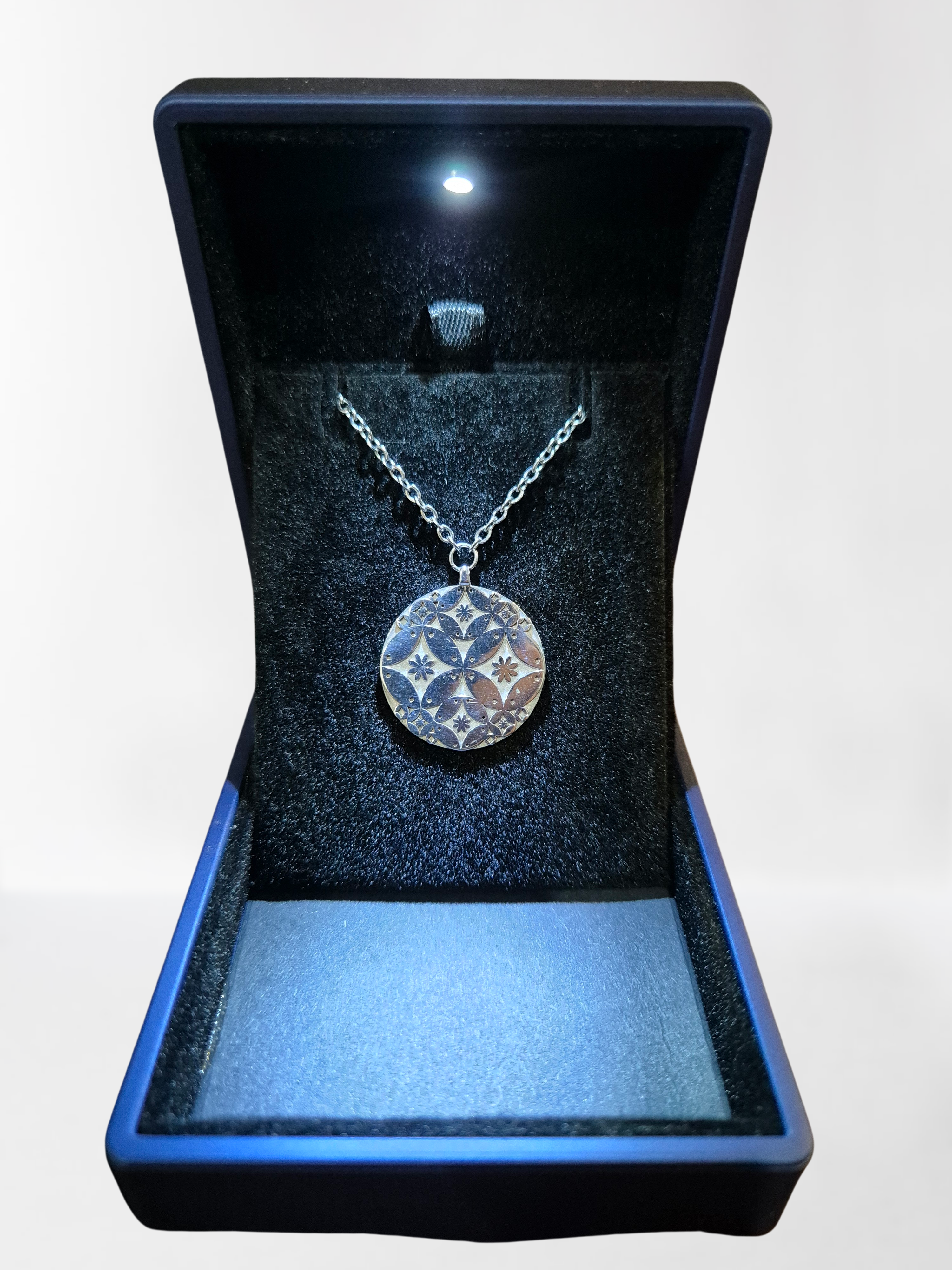Description
The motive is inspired by the traditional Indonesian Kawung pattern, adorned with the classic isen cecek design, arranged in the form of an Apollonian Gasket. The Apollonian Gasket is a fractal pattern comprising circles that are mutually tangent, with their arrangement governed by a specific mathematical equation initially described by the renowned French philosopher and mathematician, René Descartes
Both the Kawung motif and the Apollonian Gasket hold historical significance, representing some of the oldest known patterns. In Indonesia, the Kawung motif dates back to the 13th century, evident in the artifacts from the Singosari Kingdom, such as the Mahakala statue. René Descartes, the eminent French philosopher and mathematician, expounded that for every set of four kissing circles, the radii of these circles satisfy a particular quadratic equation. By considering Kawung as a circle and applying Descartes' theorem, we can skillfully draw the captivating Apollonian Kawung Gasket.
Math Concept
Descartes theorem states that curvature k ( 1 / radius) of four mutually tangent circles can be described as:
\( (k_1 + k_2 + k_3 + k_4)^2 = 2 \cdot (2k_1 ^2 + k_2 ^2+ k_3 ^2 + k_4 ^2) \)
To get location of circle center, we can use complex Descartes theorem:
\( (k_1 z_1 + k_2 z_2 + k_3 z_3 + k_4 z_4)^2 = 2 \cdot (2k_1 ^2 z_1 ^ 2+ k_2 ^2 z_2^2+ k_3 ^2 z_3 ^ 2 + k_4 ^2 z_4 ^ 2) \)
How to Draw
-
Given square ABCD, draw a circle centered at O with a radius equal to half of the square side length.
-
Draw a quarter circle centered at vertex A, using the same radius.
-
Repeat step #2 three times, centering the quarter circles at vertices B, C, and D, respectively.
Exhibit

Presenting the Apollonian Kawung Necklace by The Geometry of Batik Team. With the mathematical model in hand, creating a 3D model becomes a straightforward process. The resulting 3D model serves as the foundation for crafting this necklace using the lost wax casting method in our exhibit. To enhance its appearance, the Apollonian Kawung is coated with rhodium, providing a brilliant and shiny effect.